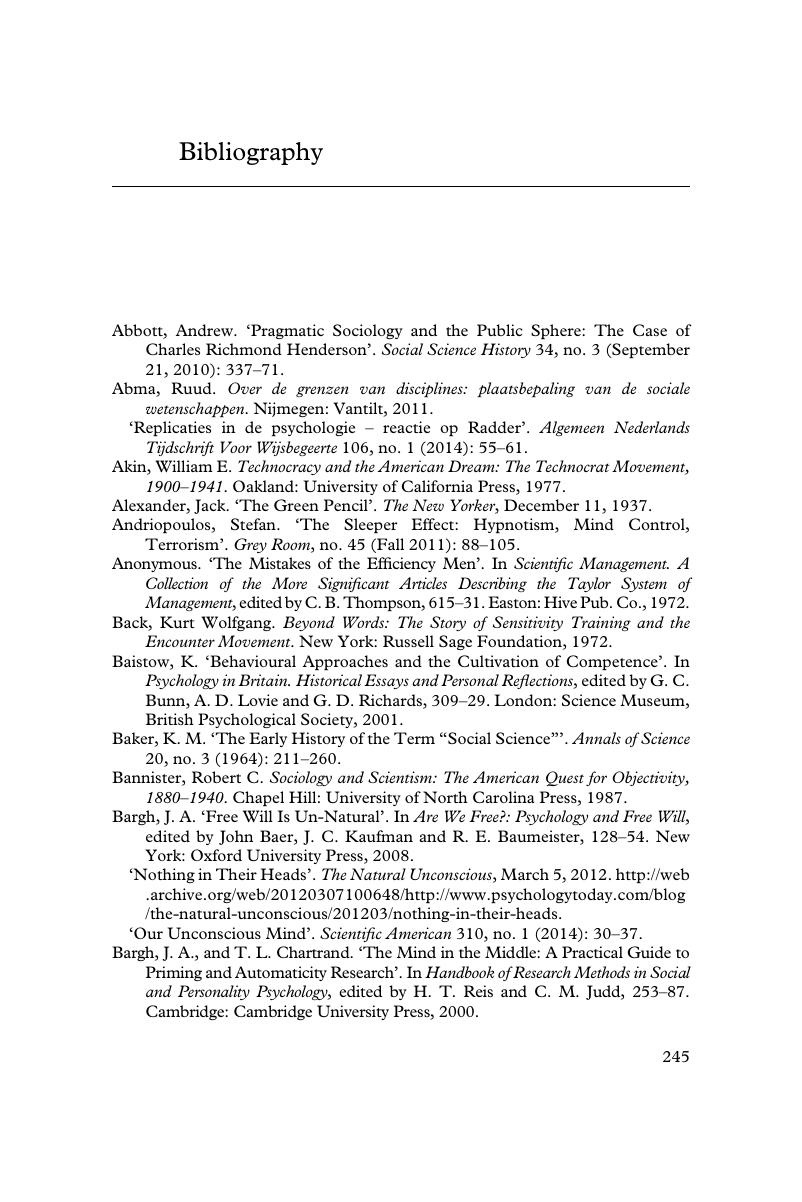Book contents
- Histories of Human Engineering
- Histories of Human Engineering
- Copyright page
- Contents
- Acknowledgements
- 1 Introduction
- 2 Tact and Technology
- 3 Scientific Management and the Human Factor
- 4 ‘Social Technology’
- 5 Dale Carnegie and the Fine Art of Dealing with People
- 6 Karl Popper’s Social Technology and the Personal Element
- 7 Tactful Leadership
- 8 Mind Control
- 9 The Priming Saga: The Subtle Technology of Psychological Experimentation
- 10 Conclusion
- Notes
- Bibliography
- Index
- References
Bibliography
Published online by Cambridge University Press: 08 June 2017
- Histories of Human Engineering
- Histories of Human Engineering
- Copyright page
- Contents
- Acknowledgements
- 1 Introduction
- 2 Tact and Technology
- 3 Scientific Management and the Human Factor
- 4 ‘Social Technology’
- 5 Dale Carnegie and the Fine Art of Dealing with People
- 6 Karl Popper’s Social Technology and the Personal Element
- 7 Tactful Leadership
- 8 Mind Control
- 9 The Priming Saga: The Subtle Technology of Psychological Experimentation
- 10 Conclusion
- Notes
- Bibliography
- Index
- References
Summary

- Type
- Chapter
- Information
- Histories of Human EngineeringTact and Technology, pp. 245 - 266Publisher: Cambridge University PressPrint publication year: 2017

